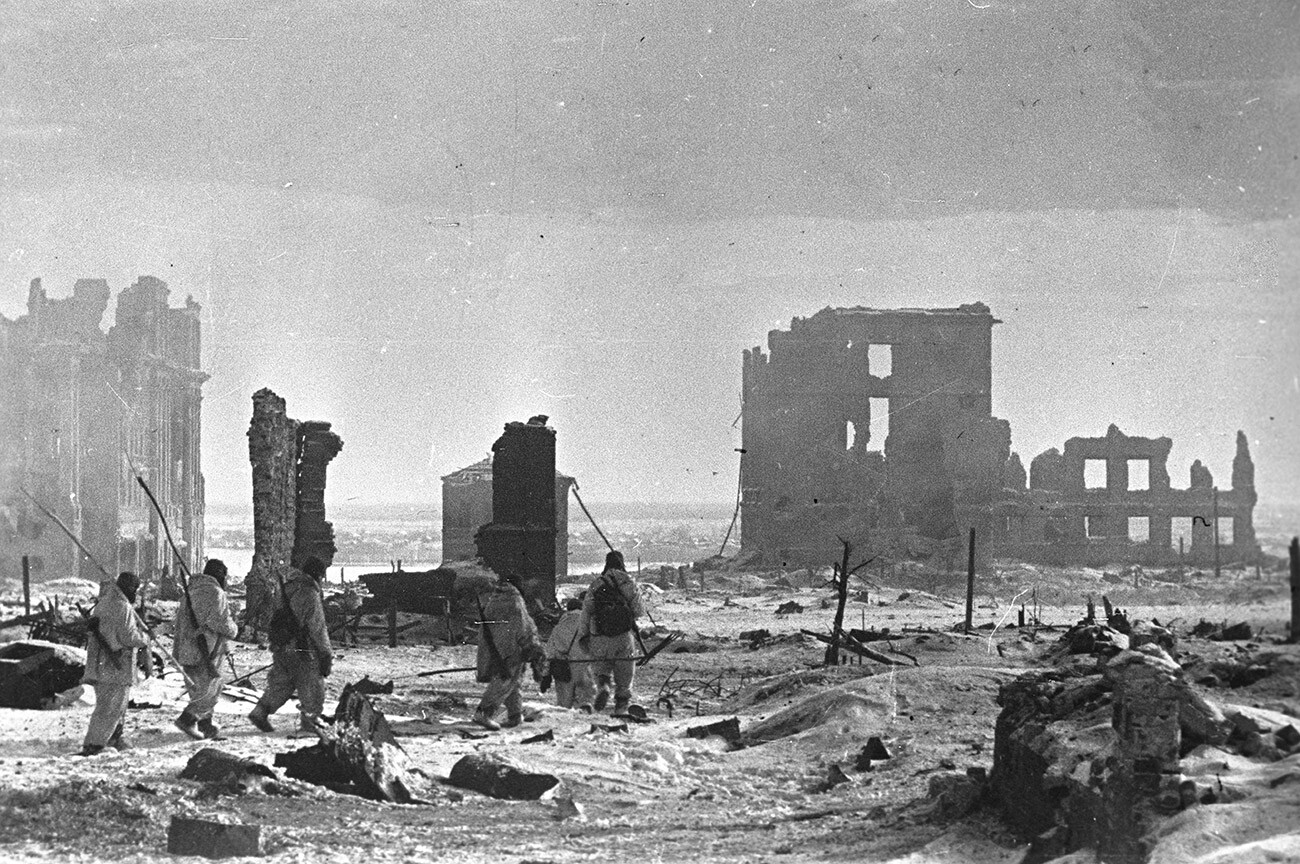Why did Stalingrad and Coventry become sister cities?

In 1944, the Soviet city of Stalingrad and the British city of Coventry became the world’s first sister cities. Though located at different ends of Europe, these cities were united by a common terrible fate - during World War II, they were almost entirely destroyed.
Coventry was the first one to suffer. This large industrial center was home to numerous aviation industries, making it a prime target for the Luftwaffe.
 The ruins of Earl Street in Coventry.
The ruins of Earl Street in Coventry.
During the night of November 14 to 15, 1940, 437 German planes bombed Coventry, destroying three quarters of the city: over four thousand houses, most industrial plants, as well as the famous St. Michael’s Cathedral. Five hundred and fifty four people died and another 865 were wounded.
Stalingrad picked up the “baton of death” in August 1942. That was when regular German raids on Coventry ended, but the city on the Volga had just begun.
 Hertford Street in Coventry after German bombing raids.
Hertford Street in Coventry after German bombing raids.
On August 23, four hundred planes of the 4th Air Fleet turned the life of Stalingraders into a real hell. Heavy high-explosive bombs fell on the city, destroying houses, followed by artillery shelling. The resulting whirlwind of fire scorched the center of the city to ashes.
“We went through a lot during the war, but what we saw on August 23 in Stalingrad struck us as a heavy nightmare,” recalled Marshal Andrey Eremenko: “Continuously upward, here and there, clouds of smoke and fire erupted in bomb bursts. Huge columns of flames soared to the sky from the area of the oil storages and brought down a sea of fire and bitter, acrid smoke. Streams of burning oil and gasoline streamed toward the Volga, the river surface itself was on fire, steamboats were burning, the asphalt of roads and sidewalks stank from the heat, and telegraph poles instantly flashed up like matches… There was an overwhelming wall of noise, a hellish disharmony of sounds. The screech of bombs flying from above was mixed with the rumble of explosions, the clatter of crumbling buildings and the crackle of raging fire. In this chaos of sounds, the moans and curses of the dying, the cries and calls for help from children, and the sobs of women stood out clearly.”
 People walking in the ruins of Coventry Cathedral.
People walking in the ruins of Coventry Cathedral.
More than 40,000 people died in Stalingrad that day. What the air force could not destroy, was destroyed in the fierce fighting that followed on the streets of the city.
Sisters in misery
The women of Coventry supported Stalingrad at the very beginning of the huge battle. For example, their message to the inhabitants of the city on the Volga said: “From this city scarred and ravaged by the arch enemy of civilization, our hearts go out to you, who now face slaughter and suffering even more fearful.”
 Stalingrad after German bombing raid.
Stalingrad after German bombing raid.
The August tragedy shocked the people of Coventry, who had once had to endure a similar nightmare. In 1943, Mayor Emily Smith and eight hundred other residents embroidered their names on a large tablecloth and sent it as a gift to Stalingrad. On the same tablecloth, they also embroidered the following words: “Little help is better than big sympathy.”
In response, a specially designed album signed by 36,000 residents of the city was sent to Great Britain from the USSR. The following year, the two cities officially sealed the “ties of friendship”, becoming the first sister cities in history.
 Soviet troops in the center of Stalingrad after liberation.
Soviet troops in the center of Stalingrad after liberation.
During the subsequent decades, Coventry and Volgograd (Stalingrad was renamed in 1961) established bilateral cooperation, exchanged visits of officials and organized cultural programs. Even during the most difficult periods of the Cold War, this friendship did not stop.
However, in March 2022, after the start of Russia’s special military operation in Ukraine, Coventry suspended its ties with Volgograd.

